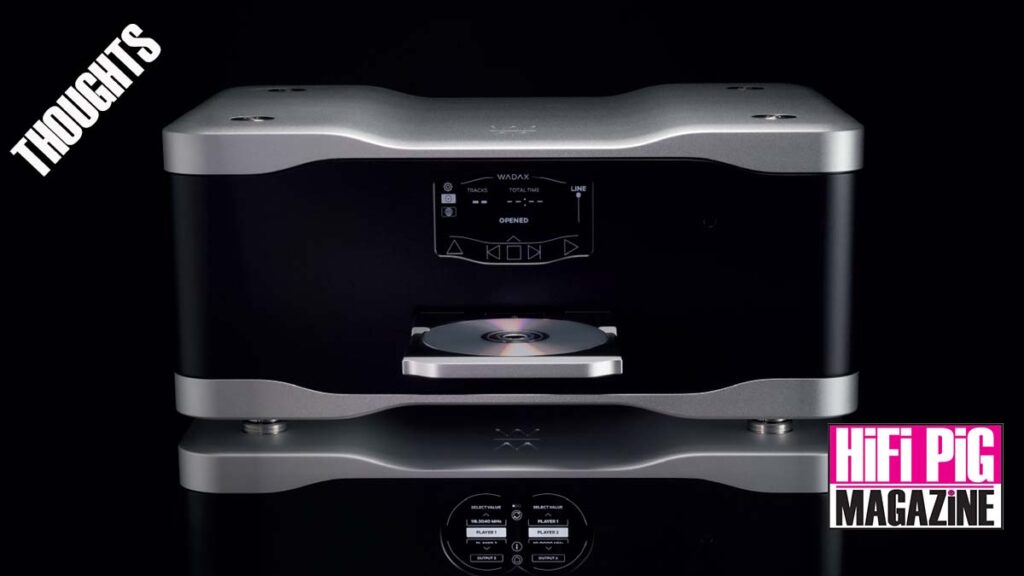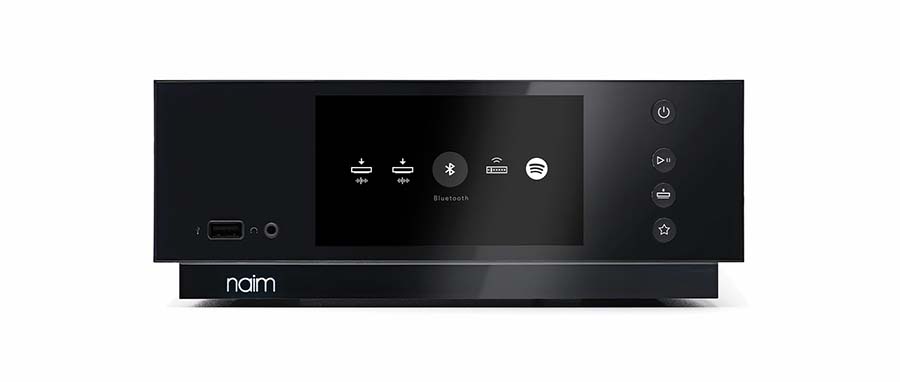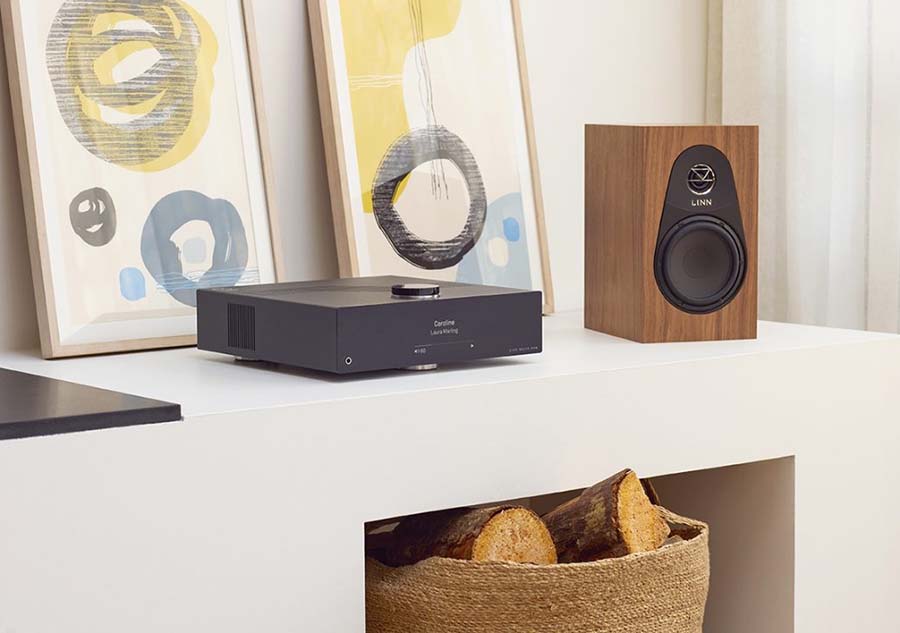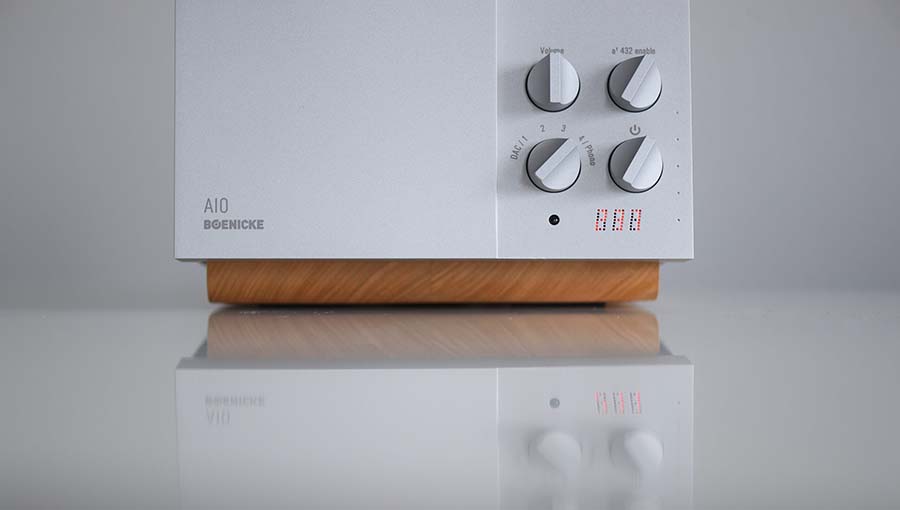All-in-One Systems Are a Good Thing – For Some People
There’s a certain romanticism in the world of HiFi about towering (or sprawling) racks filled with mismatched boxes, each one dedicated to a single task in the chain: DACs, preamps, power amps, phono stages, streamers, and more cables than you’d find backstage at Glasto. For many, this is the very essence of high-end audio—a physical manifestation of the pursuit of sonic perfection (guilty M’Lud). But here’s the thing: not everyone wants, needs, or even has the space for a mountain of kit.
There’s a strong argument to be made that all-in-one systems are not just a compromise for the casual listener, but a very good thing indeed.
For some audiophiles, convenience is seen as a bit of a dirty word. The assumption being that anything designed to make life easier must come at the expense of sound quality. The old hair-shirt thing again. But times have changed.
The all-in-one systems of today are not the plasticky midi systems of the 1980s. Brands are now pouring serious R&D into these compact solutions, and we saw this at the recent Munich High End. You can get systems with high-end DACs, serious amplification, quality streaming platforms, and phono inputs—all in a single, well-designed box. Then you can get systems that have everything in the box but the amps and you can add an amp or a pair of active loudspeakers – for the sake of argument, we’ll call these all-in-ones too.
And let’s be honest: there’s something incredibly satisfying about having a single unit that just works. No fannying about with interconnects, no endless cable upgrades, no compatibility worries. You plug it in, connect your speakers, and you’re off. You can even have a box without the amps and use actives like Auralic do at shows – next week’s Sunday Thoughts will be all about active loudspeakers.
For the music lover who just wants to listen rather than tinker endlessly, this is a blessing.
One of the great joys of HiFi is that it gives us an excuse to build ourselves a temple to sound. Dedicated listening rooms, bespoke furniture, acoustic panels—it’s a lifestyle as much as a hobby. I may be guilty as charged…M’Lud.
But not everyone has that luxury.
Modern homes, particularly in urban areas, are getting smaller. Open-plan living is common. Flats and apartments often don’t have the space to accommodate a multi-box system with separate racks and the inevitable spaghetti of cables. For many, having a wall of HiFi gear simply isn’t practical anymore.
An all-in-one system solves this problem. Compact, often beautifully designed, and capable of sitting unobtrusively on a shelf or sideboard, these systems fit into real-world living spaces. They’re domestic-friendly without demanding the living room look like the inside of a recording studio.
There’s a particular type of audiophile (Guilty M’Lud) who delights in the journey: swapping out components, testing different cables, endlessly upgrading in pursuit of the next sonic gain. But for many people, this just isn’t appealing.
Some people simply want a high-quality audio system that doesn’t require an engineering degree to operate. They want to enjoy their music, not spend their weekends reconfiguring their setup every other month…or worse.
All-in-one systems strip away the complexity. They bring the focus back to listening rather than tweaking. You don’t need to worry about synergy between DAC and amplifier, or which power supply will give you that extra bit of bass or treble sparkle. It’s all been taken care of in the design process.
This isn’t about dumbing down the hobby. It’s about offering an alternative for people who want great sound without the homework.
There was a time when choosing an all-in-one system meant accepting mediocre performance. They were considered entry-level options, suitable for kitchens or teenagers’ bedrooms, but not for “serious” listening. Often they were (and still are) labelled as being “Lifestyle” as if that was a dirty word.
That time has passed.
Today, brands like Naim, Linn, Audio Group Denmark, Devialet, WADAX, RUARK, Boenicke, Canor, Auralic, and Technics (to name just a few) are producing all-in-one systems that would give many separate systems a run for their money. Advances in digital technology mean these compact units can deliver astonishing sound quality. Some of these are all in one minus the amp, some include the amp.
For the price of a mid-range separates system, you can now buy an all-in-one solution that has been engineered holistically, designed from the ground up to work as a complete system, though some of these all-in-ones are seriously priced. There’s a certain advantage in having everything optimised to work together, rather than cobbling together boxes from different manufacturers. It makes life easier for the music lover.
The more components you add to a HiFi system, the more potential points of failure you introduce. Ground loops, hums, software incompatibilities, and firmware updates—it’s a minefield. If you are reading this, you’ve probably been there and done that!
An all-in-one system dramatically reduces this complexity. With fewer boxes come fewer cables, fewer power supplies, and far less chance of technical headaches. For anyone who values ease of use as much as sound quality, this is a major plus.
Let’s not forget: when you’re spending serious money on a HiFi system, the last thing you want is to be troubleshooting why your streamer suddenly won’t talk to your DAC. An integrated approach sidesteps much of this hassle.
One of the big advantages of modern all-in-one systems is their ability to evolve. With most high-end units now including network connectivity, software updates can bring new features, improved performance, and support for new streaming services.
This kind of future-proofing used to be the domain of computer-based systems or modular separates. But today, it’s not uncommon for an all-in-one unit to receive regular updates that genuinely enhance the user experience.
In a world where digital formats and streaming protocols are constantly changing, having a manufacturer-supported platform that can adapt over time is a serious advantage.
There’s also a bigger picture to consider. The HiFi industry needs to attract new listeners. For someone just dipping their toe into the world of better sound, the sheer complexity of separates systems can be daunting. I read an article by Ken Kessler about watches recently, and I thought his comment along the lines of “ …a buyer presented with too many choices buys nothing” was pretty accurate – these systems take away that bewildering choice.
All-in-one systems offer a gateway into high-quality audio without the barriers of entry that plague more traditional setups. They’re approachable, they look good in a modern home, and they offer an instant upgrade from smart speakers or basic soundbars, though they, too, have their place.
By making high-quality sound more accessible, all-in-one systems play a crucial role in keeping the hobby alive.
None of this is to say that separates are obsolete. For those who enjoy the process of building a system piece by piece, of fine-tuning every aspect of their sound, separates will always have their place. I count myself very much in this category of folk, but even I am looking to the future of retirement and a trimmed-down system – that’s why we’ve recently taken delivery of a second 50Kg Electrocompaniet mono bloc amp…I’m beyond hope, I reckon.
But the important point is that all-in-one systems are no longer a poor cousin to the big stack of boxes. They are a valid, high-performing alternative that suits a different lifestyle and a different kind of listener.
It’s not about dumbing down. It’s about offering choice.
Final Thoughts
There’s a certain purity in the idea of an all-in-one system. A single, beautifully designed unit that brings together all the essential elements of a HiFi setup, working in harmony, free from the clutter of cables and boxes.
For music lovers with limited space, busy lives, or simply a desire for simplicity, these systems are a godsend. They prove that convenience and quality are not mutually exclusive.
In a way, they remind me why I fell in love with HiFi in the first place: not because I wanted to build a shrine to equipment, but because I wanted to enjoy the music, though I must confess to a love of all the boxes too…
If an all-in-one system helps more people get into the hobby and enjoy their tunes, then surely that’s a good thing.
A personal viewpoint on free parties. The weekend before last was a bit of a double whammy with regards to getting to listen to outdoor music given that it was…
Unauthorized use and/or duplication of this material (in part or in full) without express and written permission from this website’s author
and/or owner is strictly prohibited. Links may be used, provided that full and clear credit is given to Hifi Pig and Big Pig Media with appropriate and specific direction (link) to the original content.
Hifi Pig is part of the Big Pig Media LLP group
of companies.
All-in-One Systems Are a Good Thing – For Some People
All-in-One Systems Are a Good Thing – For Some People
There’s a certain romanticism in the world of HiFi about towering (or sprawling) racks filled with mismatched boxes, each one dedicated to a single task in the chain: DACs, preamps, power amps, phono stages, streamers, and more cables than you’d find backstage at Glasto. For many, this is the very essence of high-end audio—a physical manifestation of the pursuit of sonic perfection (guilty M’Lud). But here’s the thing: not everyone wants, needs, or even has the space for a mountain of kit.
There’s a strong argument to be made that all-in-one systems are not just a compromise for the casual listener, but a very good thing indeed.
For some audiophiles, convenience is seen as a bit of a dirty word. The assumption being that anything designed to make life easier must come at the expense of sound quality. The old hair-shirt thing again. But times have changed.
The all-in-one systems of today are not the plasticky midi systems of the 1980s. Brands are now pouring serious R&D into these compact solutions, and we saw this at the recent Munich High End. You can get systems with high-end DACs, serious amplification, quality streaming platforms, and phono inputs—all in a single, well-designed box. Then you can get systems that have everything in the box but the amps and you can add an amp or a pair of active loudspeakers – for the sake of argument, we’ll call these all-in-ones too.
And let’s be honest: there’s something incredibly satisfying about having a single unit that just works. No fannying about with interconnects, no endless cable upgrades, no compatibility worries. You plug it in, connect your speakers, and you’re off. You can even have a box without the amps and use actives like Auralic do at shows – next week’s Sunday Thoughts will be all about active loudspeakers.
For the music lover who just wants to listen rather than tinker endlessly, this is a blessing.
One of the great joys of HiFi is that it gives us an excuse to build ourselves a temple to sound. Dedicated listening rooms, bespoke furniture, acoustic panels—it’s a lifestyle as much as a hobby. I may be guilty as charged…M’Lud.
But not everyone has that luxury.
Modern homes, particularly in urban areas, are getting smaller. Open-plan living is common. Flats and apartments often don’t have the space to accommodate a multi-box system with separate racks and the inevitable spaghetti of cables. For many, having a wall of HiFi gear simply isn’t practical anymore.
An all-in-one system solves this problem. Compact, often beautifully designed, and capable of sitting unobtrusively on a shelf or sideboard, these systems fit into real-world living spaces. They’re domestic-friendly without demanding the living room look like the inside of a recording studio.
There’s a particular type of audiophile (Guilty M’Lud) who delights in the journey: swapping out components, testing different cables, endlessly upgrading in pursuit of the next sonic gain. But for many people, this just isn’t appealing.
Some people simply want a high-quality audio system that doesn’t require an engineering degree to operate. They want to enjoy their music, not spend their weekends reconfiguring their setup every other month…or worse.
All-in-one systems strip away the complexity. They bring the focus back to listening rather than tweaking. You don’t need to worry about synergy between DAC and amplifier, or which power supply will give you that extra bit of bass or treble sparkle. It’s all been taken care of in the design process.
This isn’t about dumbing down the hobby. It’s about offering an alternative for people who want great sound without the homework.
There was a time when choosing an all-in-one system meant accepting mediocre performance. They were considered entry-level options, suitable for kitchens or teenagers’ bedrooms, but not for “serious” listening. Often they were (and still are) labelled as being “Lifestyle” as if that was a dirty word.
That time has passed.
Today, brands like Naim, Linn, Audio Group Denmark, Devialet, WADAX, RUARK, Boenicke, Canor, Auralic, and Technics (to name just a few) are producing all-in-one systems that would give many separate systems a run for their money. Advances in digital technology mean these compact units can deliver astonishing sound quality. Some of these are all in one minus the amp, some include the amp.



For the price of a mid-range separates system, you can now buy an all-in-one solution that has been engineered holistically, designed from the ground up to work as a complete system, though some of these all-in-ones are seriously priced. There’s a certain advantage in having everything optimised to work together, rather than cobbling together boxes from different manufacturers. It makes life easier for the music lover.
The more components you add to a HiFi system, the more potential points of failure you introduce. Ground loops, hums, software incompatibilities, and firmware updates—it’s a minefield. If you are reading this, you’ve probably been there and done that!
An all-in-one system dramatically reduces this complexity. With fewer boxes come fewer cables, fewer power supplies, and far less chance of technical headaches. For anyone who values ease of use as much as sound quality, this is a major plus.
Let’s not forget: when you’re spending serious money on a HiFi system, the last thing you want is to be troubleshooting why your streamer suddenly won’t talk to your DAC. An integrated approach sidesteps much of this hassle.
One of the big advantages of modern all-in-one systems is their ability to evolve. With most high-end units now including network connectivity, software updates can bring new features, improved performance, and support for new streaming services.
This kind of future-proofing used to be the domain of computer-based systems or modular separates. But today, it’s not uncommon for an all-in-one unit to receive regular updates that genuinely enhance the user experience.
In a world where digital formats and streaming protocols are constantly changing, having a manufacturer-supported platform that can adapt over time is a serious advantage.
There’s also a bigger picture to consider. The HiFi industry needs to attract new listeners. For someone just dipping their toe into the world of better sound, the sheer complexity of separates systems can be daunting. I read an article by Ken Kessler about watches recently, and I thought his comment along the lines of “ …a buyer presented with too many choices buys nothing” was pretty accurate – these systems take away that bewildering choice.
All-in-one systems offer a gateway into high-quality audio without the barriers of entry that plague more traditional setups. They’re approachable, they look good in a modern home, and they offer an instant upgrade from smart speakers or basic soundbars, though they, too, have their place.
By making high-quality sound more accessible, all-in-one systems play a crucial role in keeping the hobby alive.
None of this is to say that separates are obsolete. For those who enjoy the process of building a system piece by piece, of fine-tuning every aspect of their sound, separates will always have their place. I count myself very much in this category of folk, but even I am looking to the future of retirement and a trimmed-down system – that’s why we’ve recently taken delivery of a second 50Kg Electrocompaniet mono bloc amp…I’m beyond hope, I reckon.
But the important point is that all-in-one systems are no longer a poor cousin to the big stack of boxes. They are a valid, high-performing alternative that suits a different lifestyle and a different kind of listener.
It’s not about dumbing down. It’s about offering choice.
Final Thoughts
There’s a certain purity in the idea of an all-in-one system. A single, beautifully designed unit that brings together all the essential elements of a HiFi setup, working in harmony, free from the clutter of cables and boxes.
For music lovers with limited space, busy lives, or simply a desire for simplicity, these systems are a godsend. They prove that convenience and quality are not mutually exclusive.
In a way, they remind me why I fell in love with HiFi in the first place: not because I wanted to build a shrine to equipment, but because I wanted to enjoy the music, though I must confess to a love of all the boxes too…
If an all-in-one system helps more people get into the hobby and enjoy their tunes, then surely that’s a good thing.
Stuart Smith
What do you think about all-in-one systems? A good thing, or dumbing down the serious business of box collecting?
Read more Sunday Thoughts and Views Of Stu.
Read More Posts Like This
https://youtu.be/9WNK3ELTpAo
A personal viewpoint on free parties. The weekend before last was a bit of a double whammy with regards to getting to listen to outdoor music given that it was…
https://youtu.be/f7zeNU7Nifo